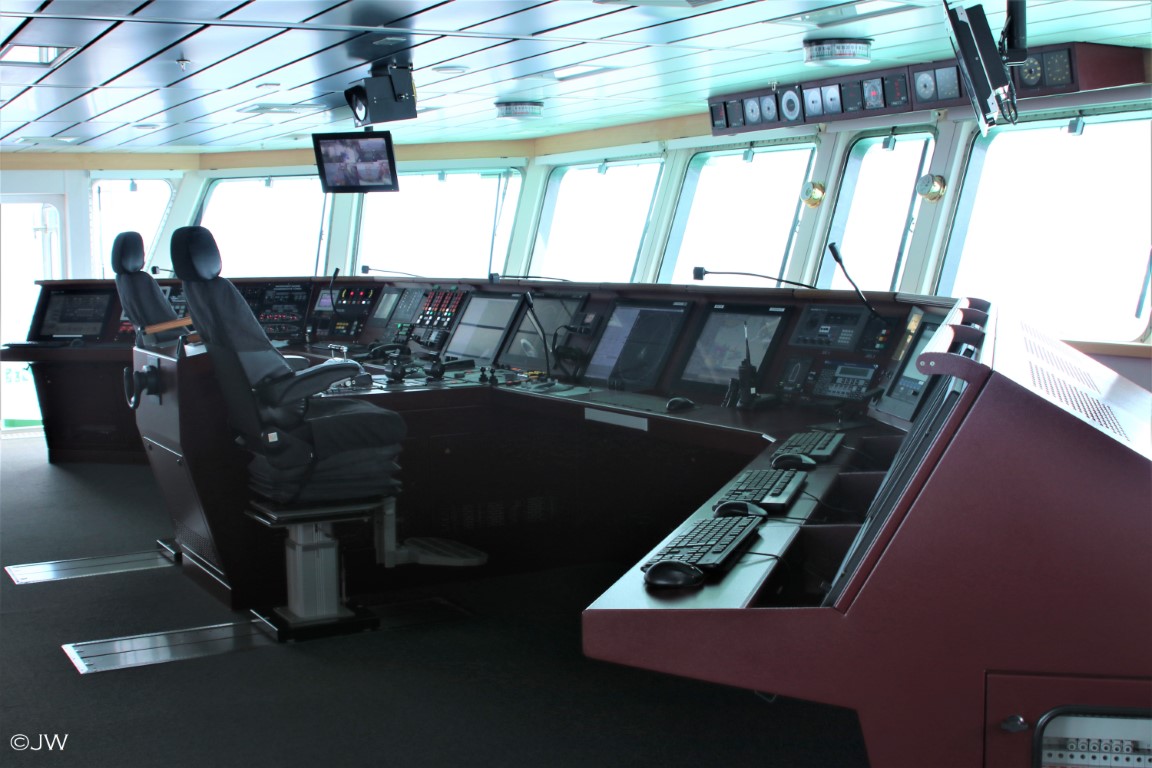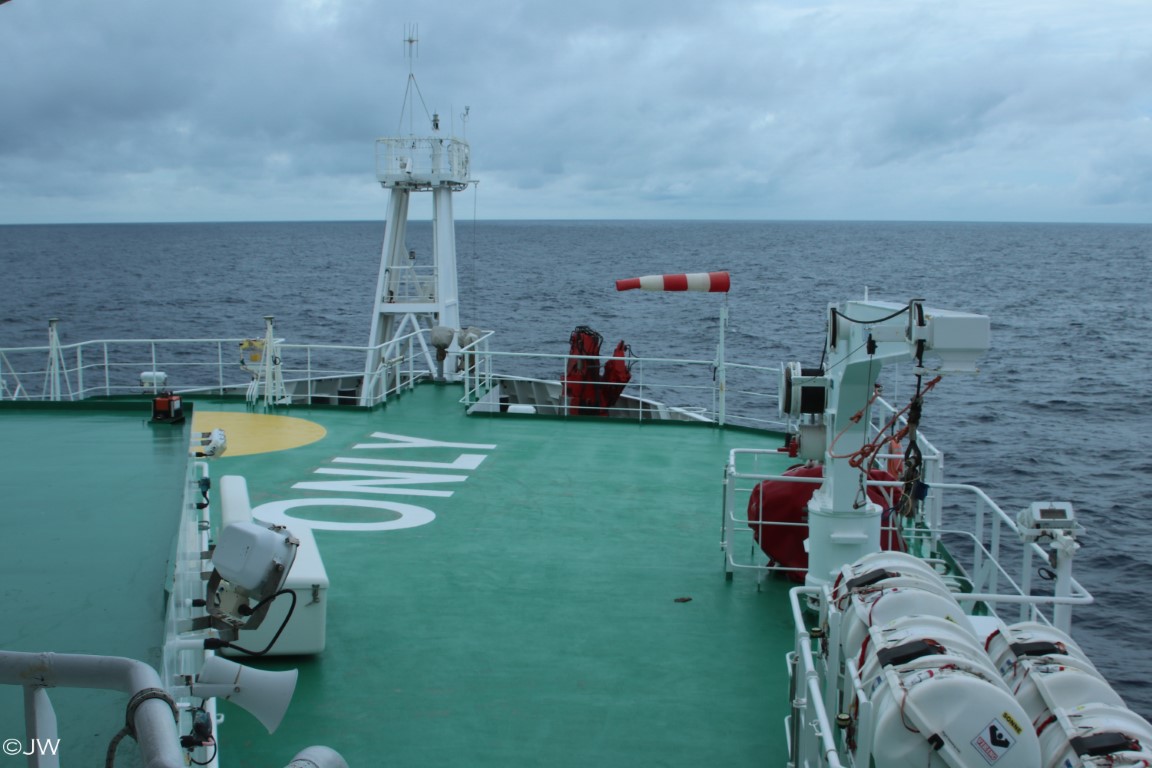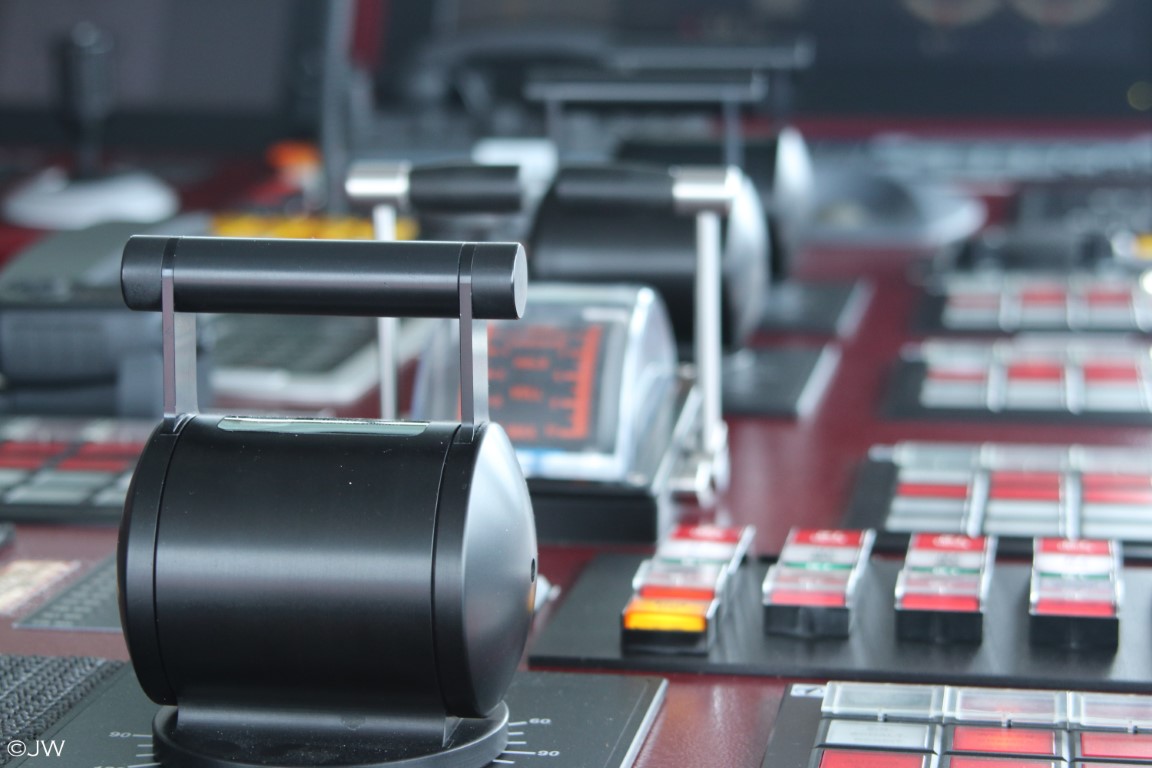How is one giant research vessel managed?
Well, like any ship of this size, you will find the answer on what’s called the bridge. No worries, we are not trying to connect different ships between each other. That is just the main working station from which the ship is navigated. A little bit like the brain of the ship. It is run by a very competent, optimized and performant team consisting of… one single person per shift.
Indeed, one nautical officer is piloting the ship, communicating with external radio station if needed, assigning working groups to specific tasks, calling the responsible person for any situation, taking decisions in case of emergency, etc. There are 3 nautical officers in total, working each two times 4h/day. One of them Heike. She agreed to give us a little bit of her time to answer our numerous (and naïve) questions.

Did you know that the ship can be navigated from three different locations on the bridge?
Well, we didn’t. In fact, beside the main navigation panel (the BIG ONE!) in the middle, you will find two smaller panels on each side of the bridge. The portside panel is used for rare, specific maneuvers in the port (as the name is literally indicating, wooooh). The starboard panel is usually used during scientific operations on deck. That is why research vessels are generally manufactured asymmetrically. From the bridge, we enjoyed the view onto the main working deck in front of the hangar on starboard, whereas the various scientific labs are aligned on portside.
The main, first motto on board is SAFETY! Everything needs to be safe, secure and safe again! Safe, safe, saaaaaafe, S. A. F. E.! Safer than safe! Twice time safe! So guess what: You have every life SAVING system at least twice on board. That is the ‘safe-return-to-port’ principle. Therefore, we have, 2 propellers, 2 rudders, 2 electrical engines for each rudder, 2 main fridges (for food), 4 diesel motors (2 propulsion engines and 2 power supply engines… Ah yes and one additional emergency engine, so they are actually 5 J).
To keep it simple: 2 Diesel propulsion engines + 2 Diesel power supply engines = 4 + 1 Emergency engine = 5 Diesel engines (Yaaaayyyy!).
Briefly about steering: 2 (360° rotational) thrusters + 1 pump-jet = sensitive and stable, smooth like butter (it’s a German research vessel…) movements (do you still follow us here?).
The SONNE research vessel is an amazing, unique ship among his kind. Indeed, the food is amazing!… More seriously, it possesses a unique, dynamic pumping system to keep the ship stable during any kind of large-scale operation (so if people are less seasick here, than on METEOR, ALKOR or POLAR…FUCHS, then you know why).
On the bridge you will find also – to keep it short – panels for watertight doors (green means closed = GOOD!, red means open = BAD!), fire alarm systems, central command, Mini-fog (intelligent fog spreading system), camera monitoring and… much more. For example, you have a whole panel group just for the radio communication: UHF panel, VHF panel, satellite panel, each of them can communicate on dozens of frequencies at the same time. The nautical officer can also just communicate from his steering position.
By the way, one other reason to go to the bridge is to buy phone cards. You will get the opportunity to call home to tell your family how amazing your adventures (and especially the food) are. The satellite connection is quite stable. In terms of internet connection, free Wifi is available, but as it has to be shared between the whole crew and parts of the bandwidth are booked for other systems, you can imagine that NETFLIX streaming is not on the agenda.

Time is passing, we have had a lot of interesting discussions on the bridge. In the end, we were drifting away from the operational topics about the bridge and Heike was telling us more about her personal experience as a nautical officer. In terms of physical health, you need to be…guess… healthy! That means medical checkups aiming the physical ability license to work at sea. Every 2 years. And like in every job, insurances could become crucial. Heike’s favorite cruise destinations so far: South Georgia, Patagonia, Labrador Sea and Antarctica, where she would really like to travel again!
Thank you, Heike, for these insightful discussions! So dear readers, if you happen to sail on such a big vessel in the future, don’t forget to pass by on the bridge! (Hihi!)
Cheers,
Louis and Julia
